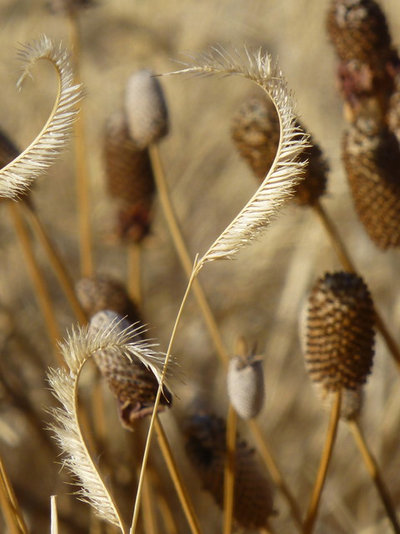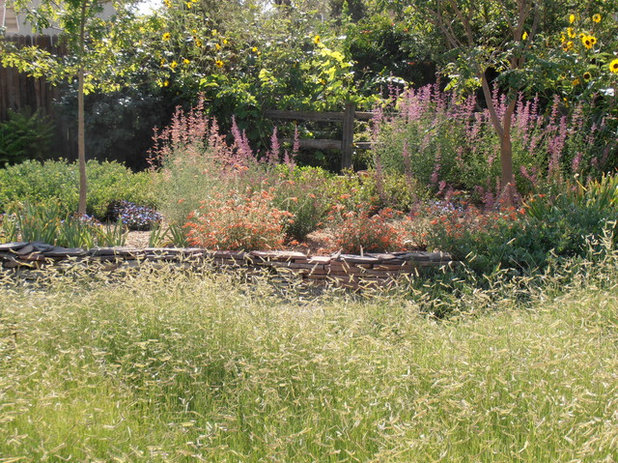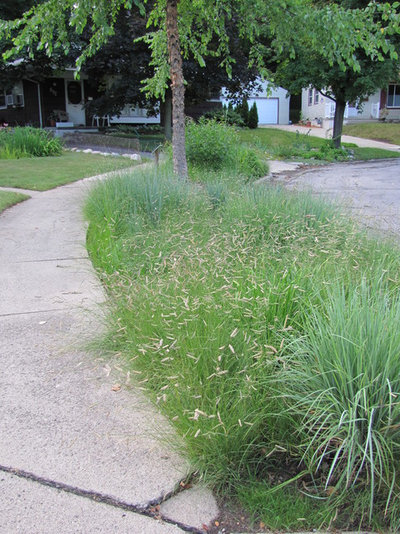I have a crush on blue grama grass (
Bouteloua gracilis), whose feathery summer seed heads would be the envy of any mascara commercial. Even better, blue grama grass is a resilient, tough little native prairie grass that thrives in dry, sunny locations and is a great solution for difficult soils and garden areas — from parking strips to rocky glades and steep slopes.

Waterwise Landscapes Incorporated
Botanical name: Bouteloua gracilisCommon name: Blue grama grass
Origin: Native to west of the Mississippi river, except Oregon, Washington and Louisiana
Where it will grow: Hardy to -40 degrees Fahrenheit (USDA zones 3 to 10; find your zone)
Water requirement: Dry to medium soil
Light requirement: Full sun to some shade
Mature size: 6 to 12 inches tall and 1 foot wide
Benefits and tolerances: Does great in dry soils, from clay to sandy to slightly rocky
Seasonal interest: Blooms in early to mid summer
When to plant: Potted or bare-root plants can be planted from spring to early fall; sow seeds in late fall through early summer.
Distinguishing traits. Blue grama easily handles drought, even going dormant in extreme drought conditions to come back just fine. It’s more a bunch grass in the southern parts of its range, and creeps slowly the farther north you go. Blue grama is also a larval host plant to many skipper butterflies.
Shown: Blue grama seed heads and Mexican hat (
Ratibida columnifera)
seed heads in winter

Waterwise Landscapes Incorporated

Creating Sustainable Landscapes, LLC
How to use it. Often used as a lawn replacement, blue grama is suited to many situations, including at the front of a border or in a low meadow-style planting mixed in among shorter perennials. If you use it in a low- to medium-traffic lawn setting, let it grow tall to get the ornamental seed heads and shade the soil, which will conserve moisture in the root zone.
Planting notes. Potted plants can go in anytime after the last spring frost, into late summer or early fall; generally, potted warm-season prairie grasses, such as this one, need a good month to root out in the soil in fall before hard freezes come. Sow seeds in fall with other perennials, or in spring after the danger of frost has passed. If you sow in spring, keep the area damp until germination in about a week, then water weekly or as needed until it becomes established.





